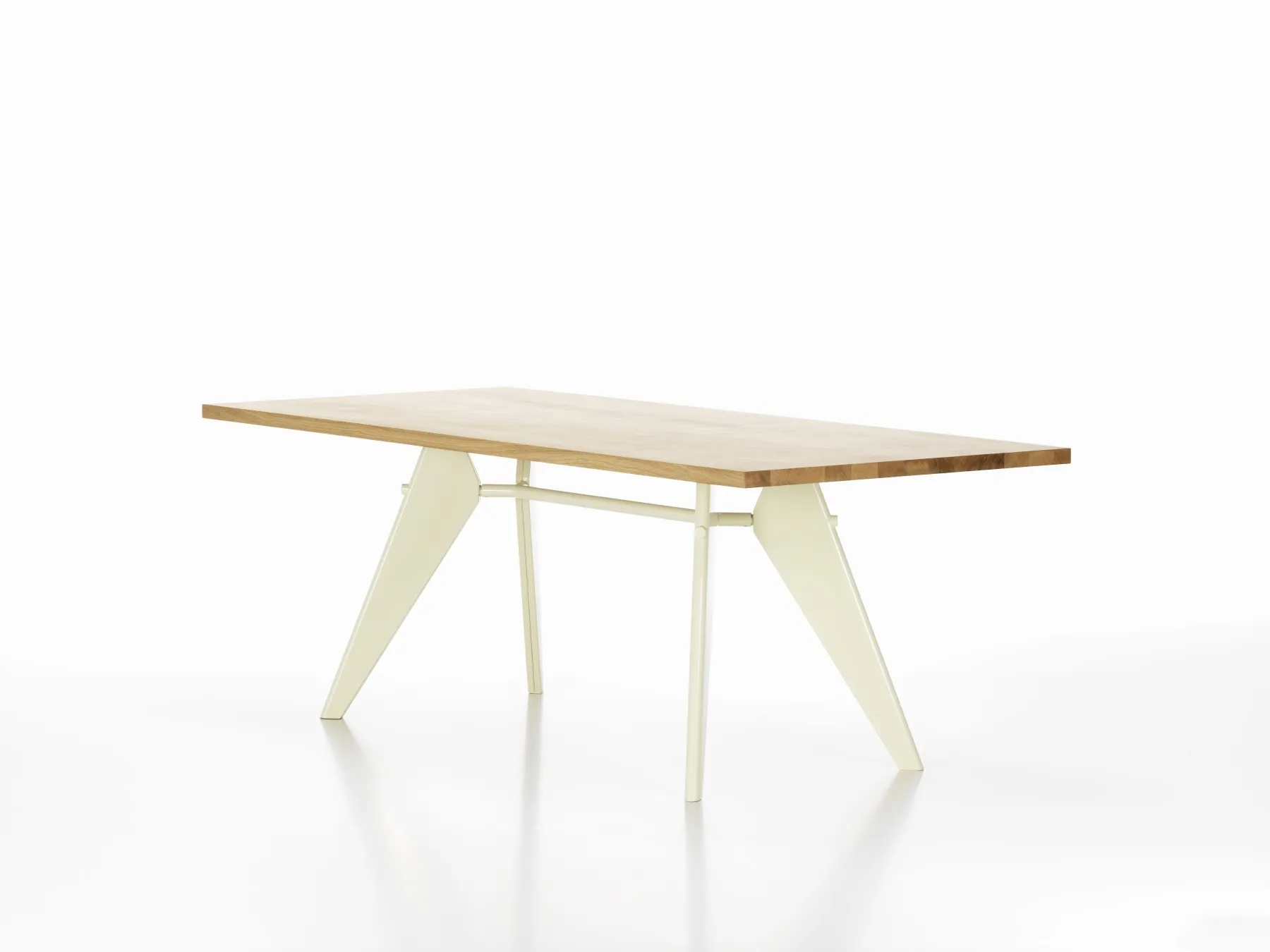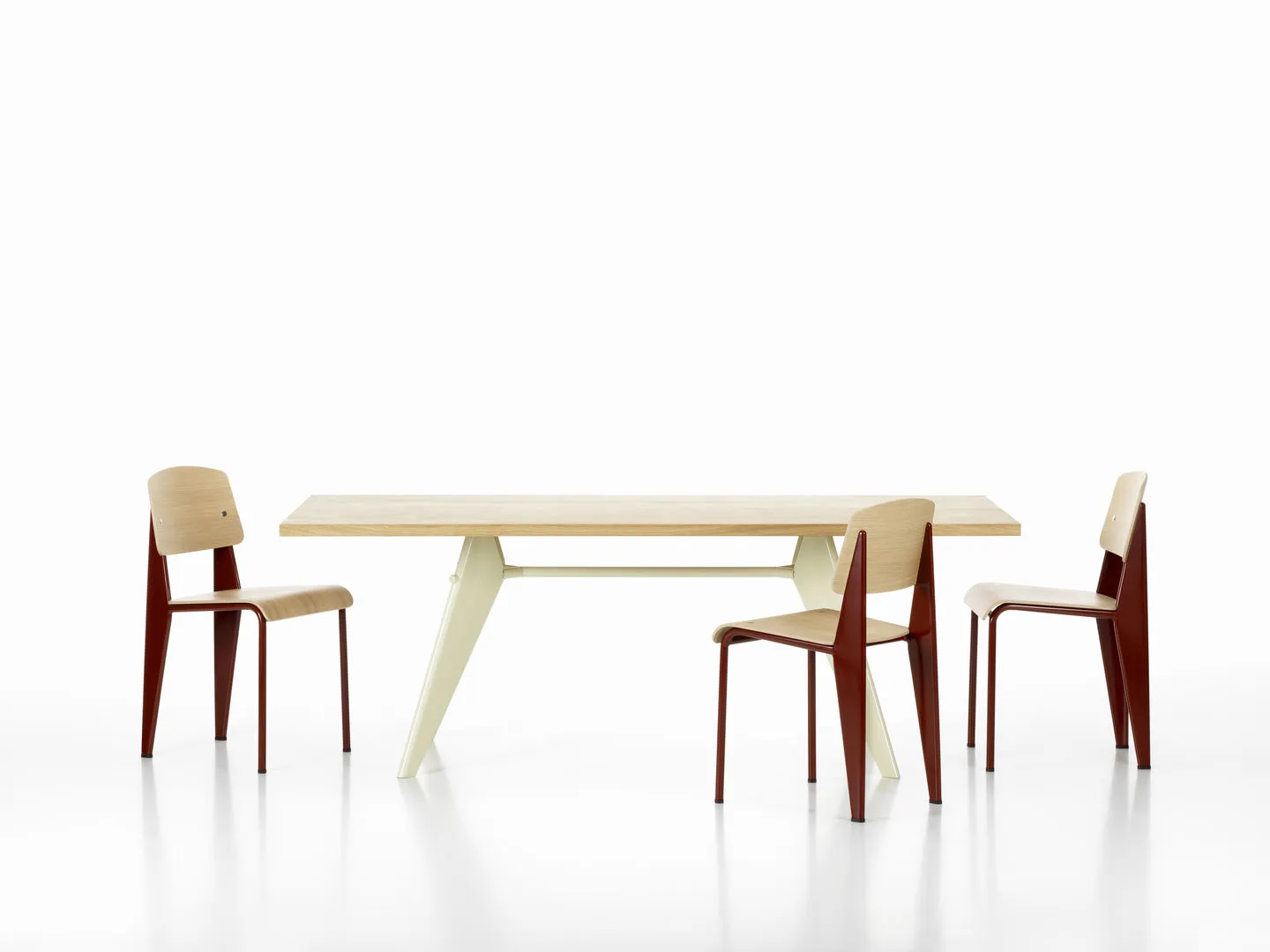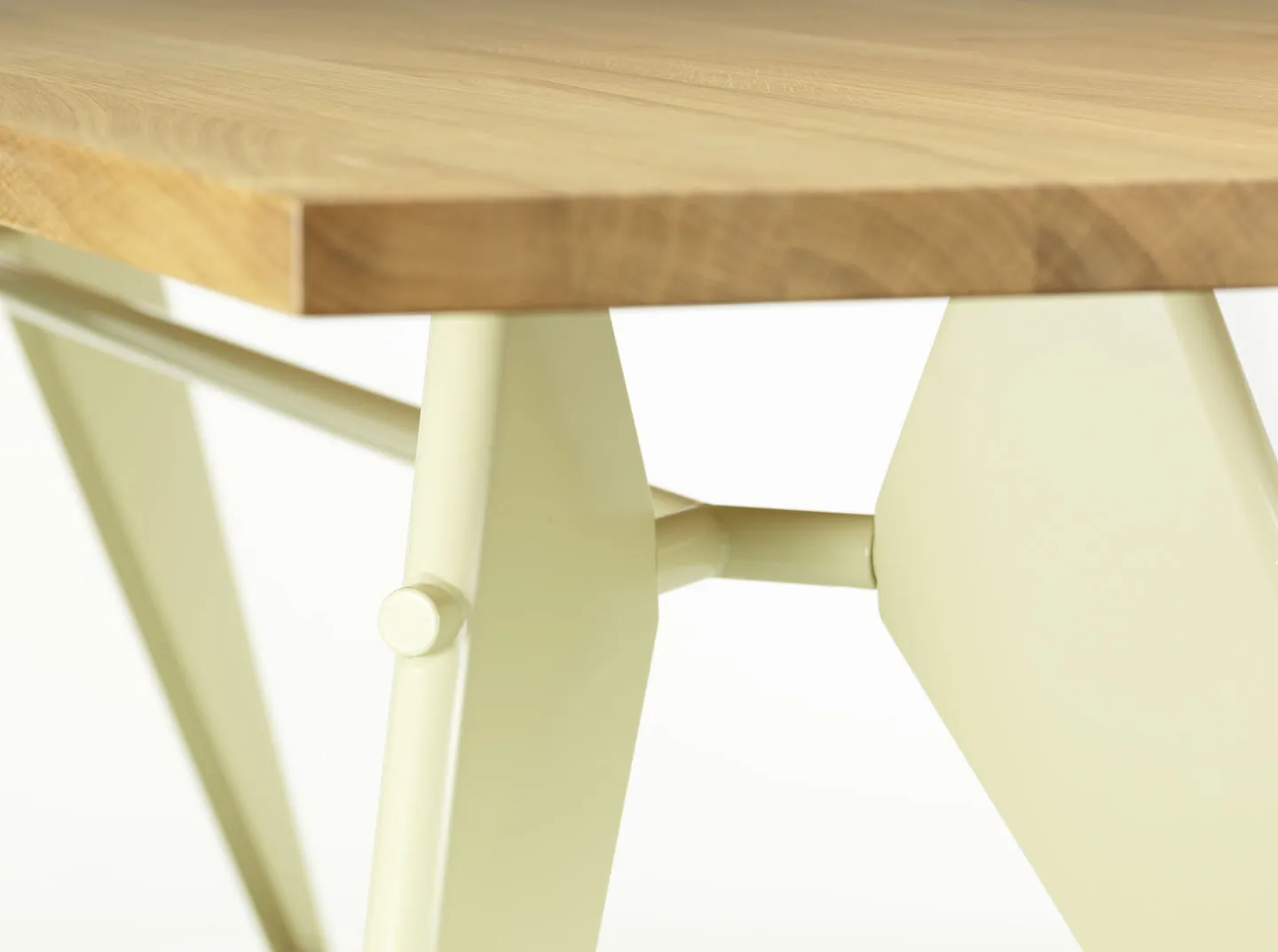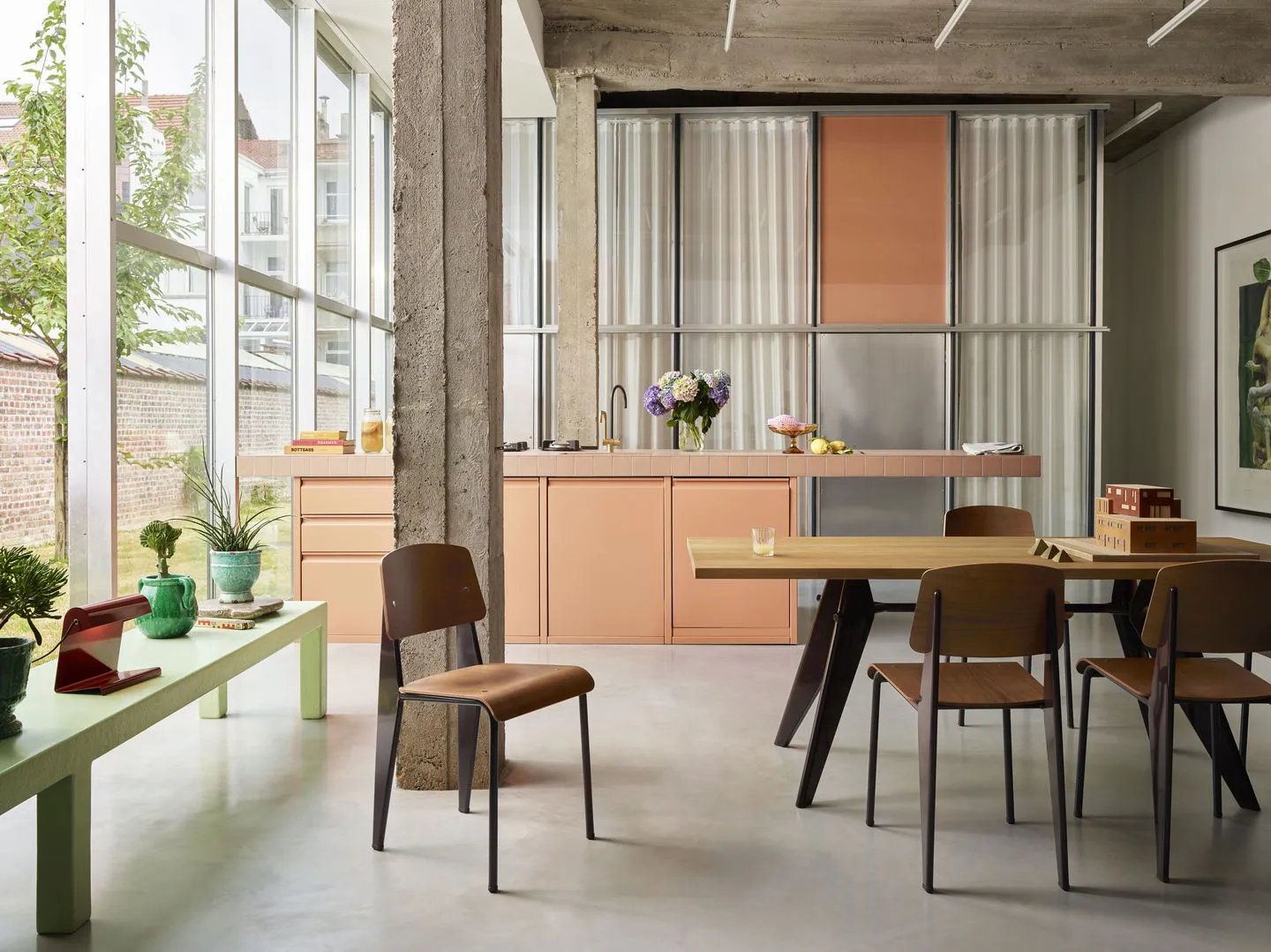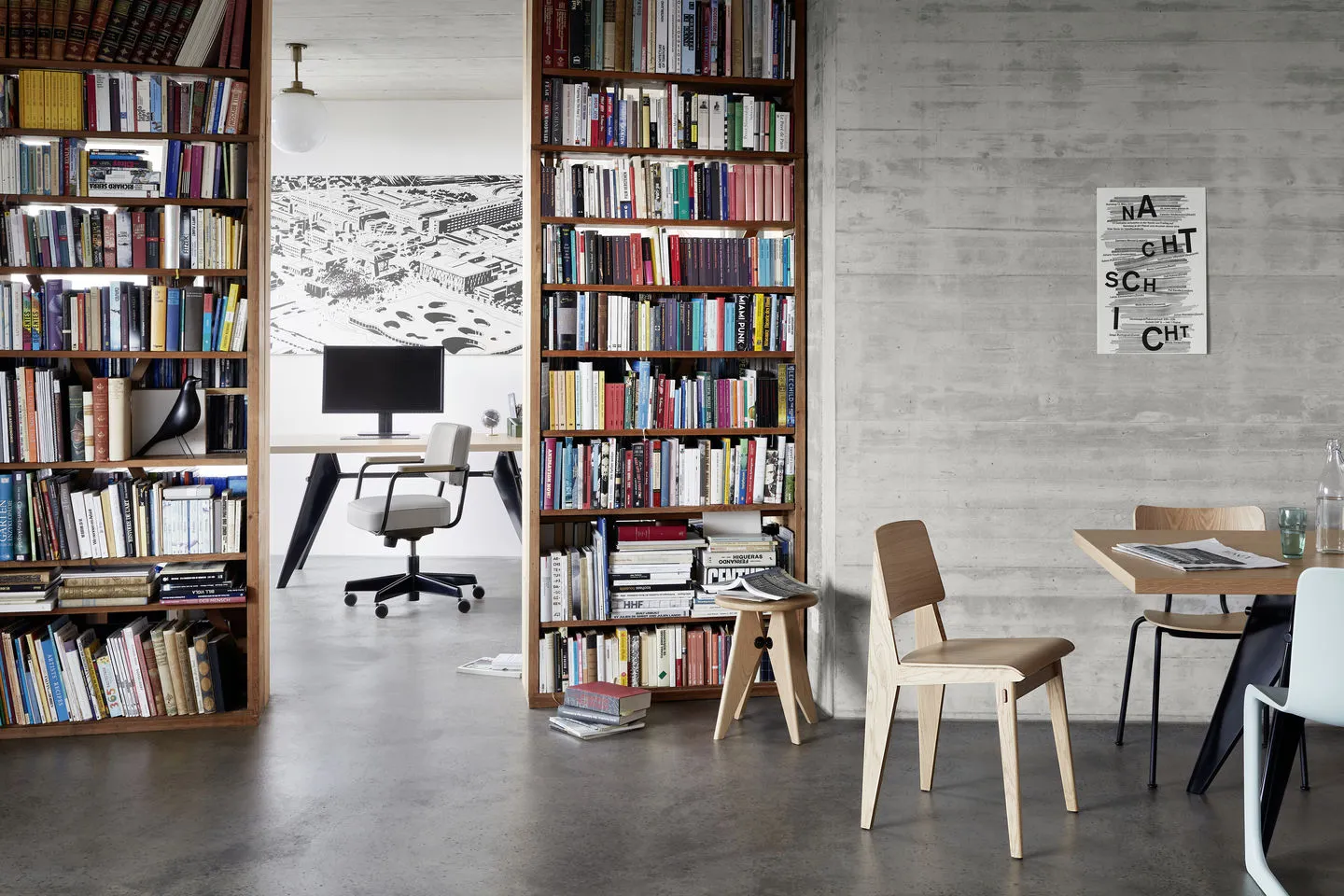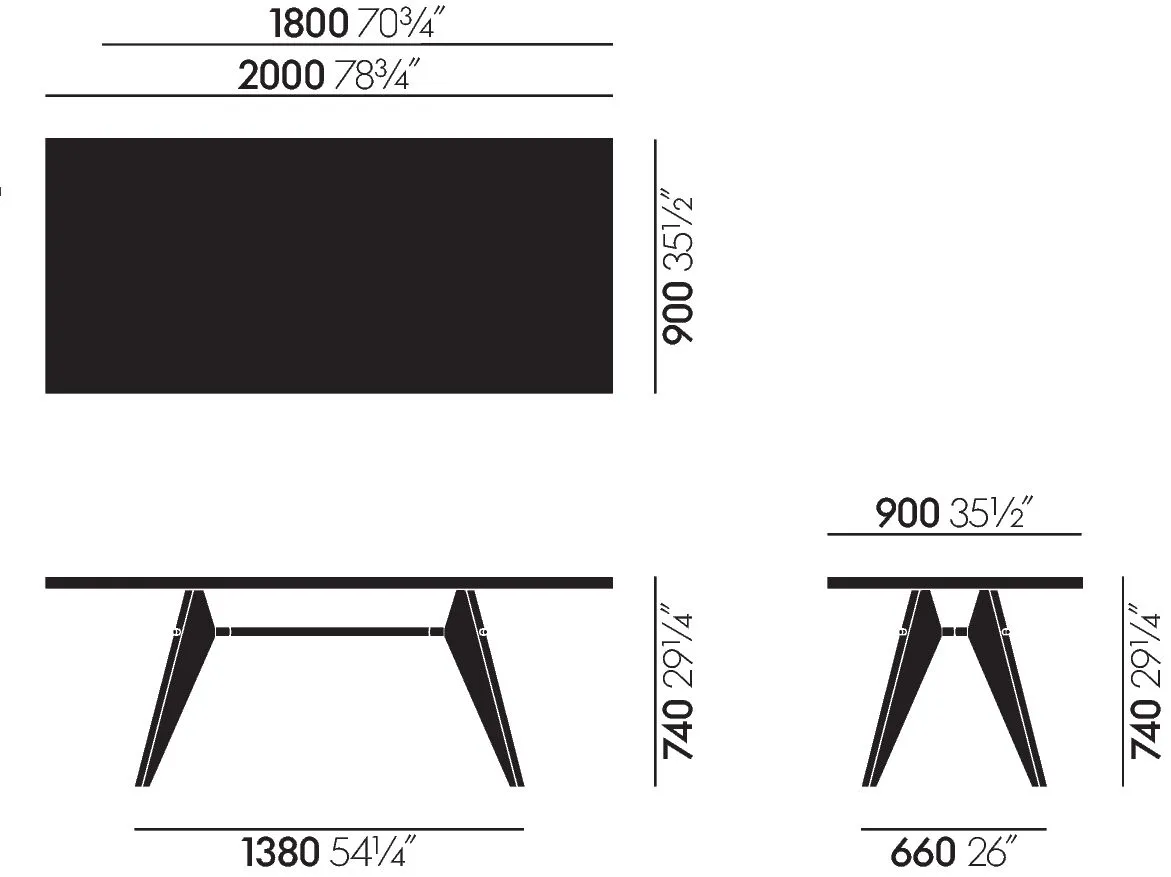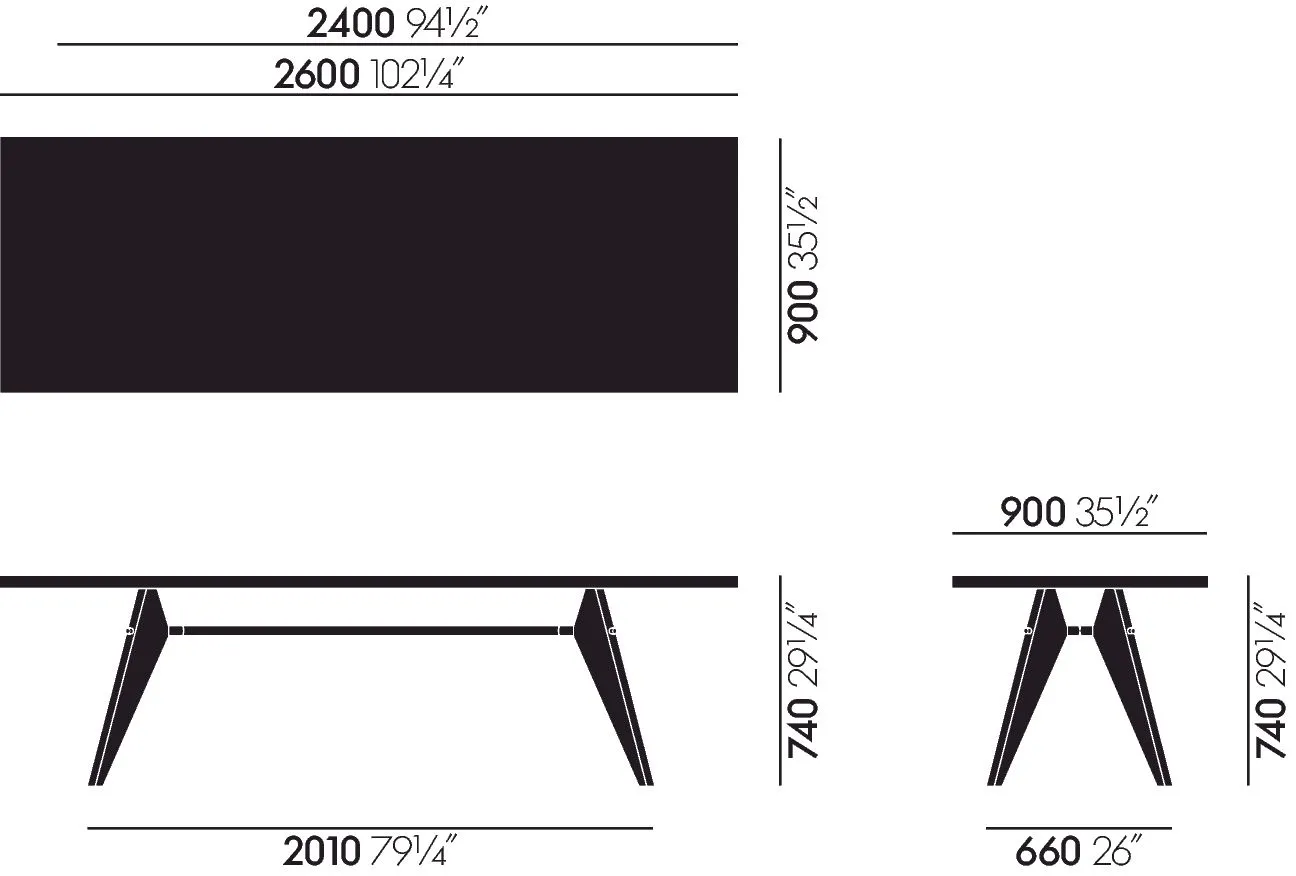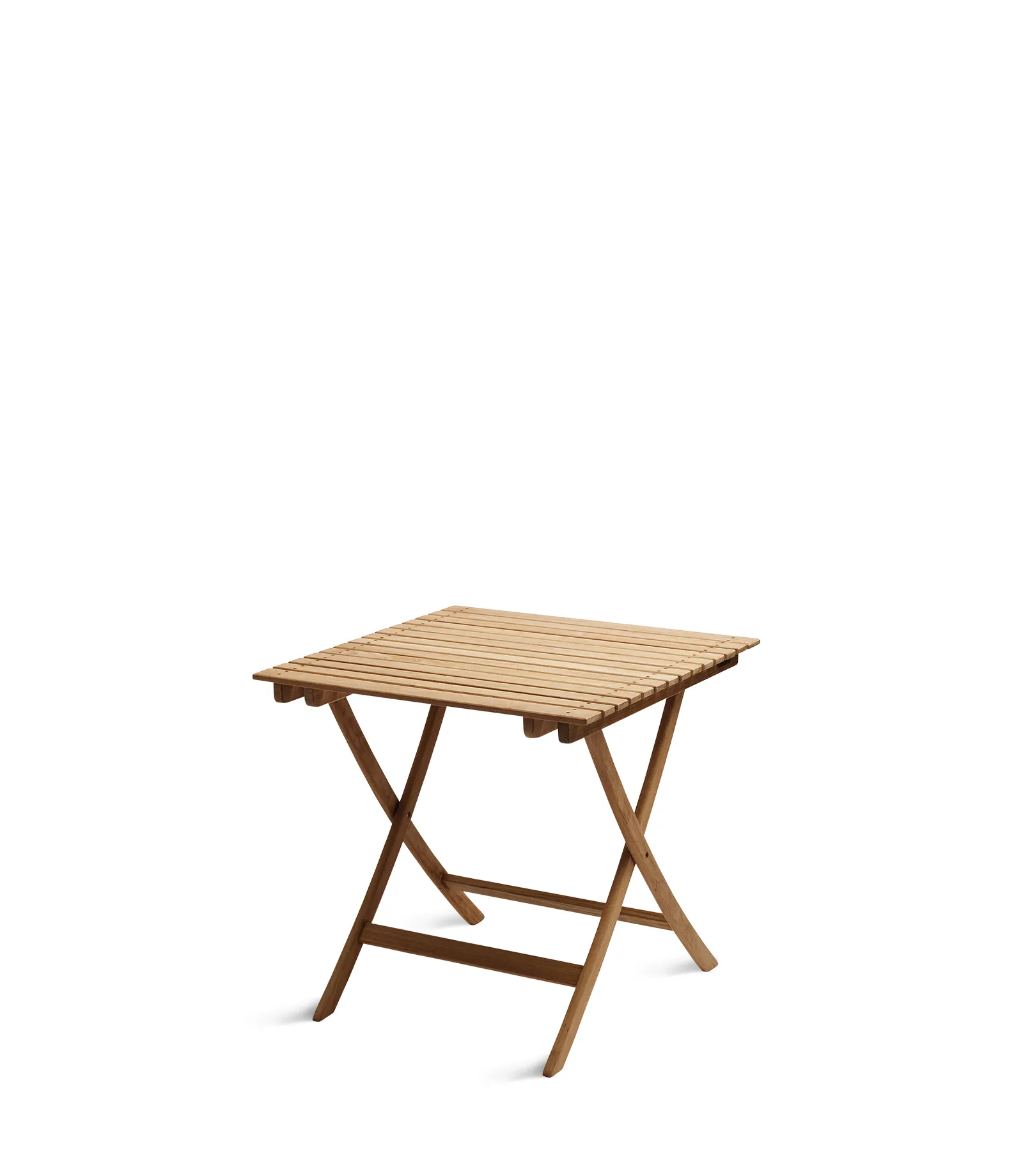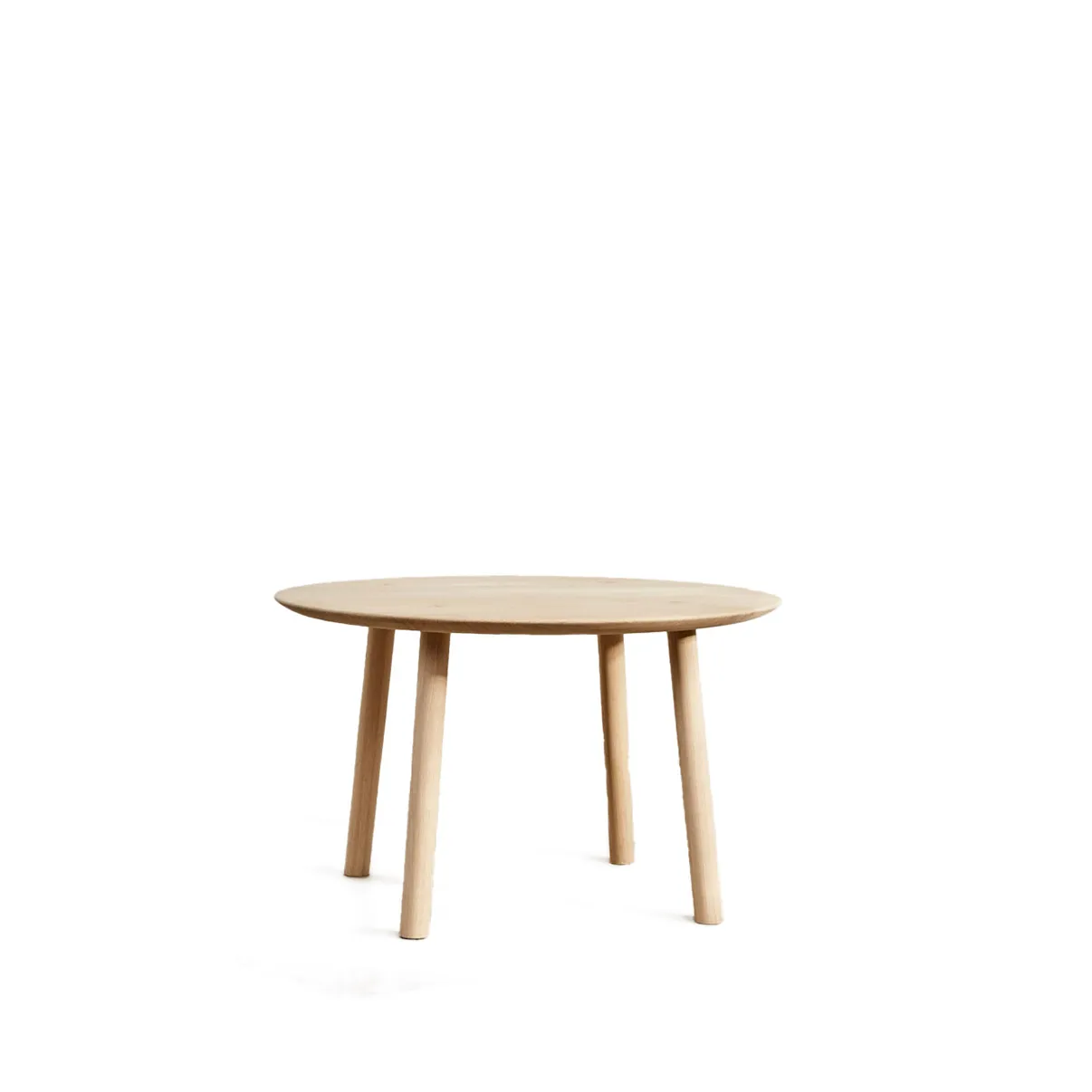EM Table
The aesthetic appearance of Jean Prouvé's EM Table adheres to structural principles, illustrating the flow of forces and stresses in its construction. It comes in a range of sizes with table tops in premium solid wood. Thanks to this wide selection, the ideal EM Table can be found for every dining room.
Avaiable in five lengths:
1800: 70.75"L x 35.5"D x 29.25"H
2000: 78.75"L x 35.5"D x 29.25"H
2200: 86.50"L x 35.5"D x 29.25"H
2400: 94.50"L x 35.5"D x 29.25"H
2600: 102.25"L x 35.5"D x 29.25"H
Table top: solid wood in natural oak with oiled finish, dark stained oak with protective natural lacquer finish, or American walnut with oiled finish.
Base: bent sheet steel, powder-coated finish (smooth) in Blanc Colombe (Ecru) , Gris Vermeer, Blé Vert, Japanese Red, Bleu Marcoule, Bleu Dynastie or Deep Black
Jean Prouvé

Jean Prouvé completed his training as a metal artisan before opening his own workshop in Nancy in 1924. In the following years, he created numerous furniture designs, and in 1947, Prouvé established his own factory. Due to disagreements with the majority shareholders, he left the company in 1953. During the following decades, Prouvé was a consulting engineer on several important architectural projects in Paris.
He left his mark on architectural history again in 1971, playing a significant role in selecting the design of Renzo Piano and Richard Rogers for the Centre Pompidou as chairman of the competition jury. Prouvé's work encompasses a wide range of objects, from a letter opener to lighting and furniture to façade elements and large exhibition structures – essentially, almost anything suited to industrial production methods.
In 2002, under close coöperation with the Prouvé family, Vitra began to issue re-editions of designs by this great French constructeur.
Vitra

Vitra, founded in 1950 by Willi and Erika Fehlbaum in Basel, Switzerland, initially specialized in shopfitting. Inspired by the German word 'Vitrine,' meaning display case, Vitra evolved into a global design powerhouse.
In 1956, Vitra began licensed production of iconic designs by Charles and Ray Eames, expanding to Weil am Rhein, Germany, where the renowned Vitra Campus now stands. This architectural marvel houses the Vitra Design Museum and VitraHaus, honoring the Eames legacy.
Today, as a third-generation family business, Vitra blends environmental, cultural, and commercial missions, shaping innovative design solutions that redefine living and working spaces worldwide. Their commitment to sustainability is evident in every aspect of production, reflecting a continuous drive for progress and excellence.
